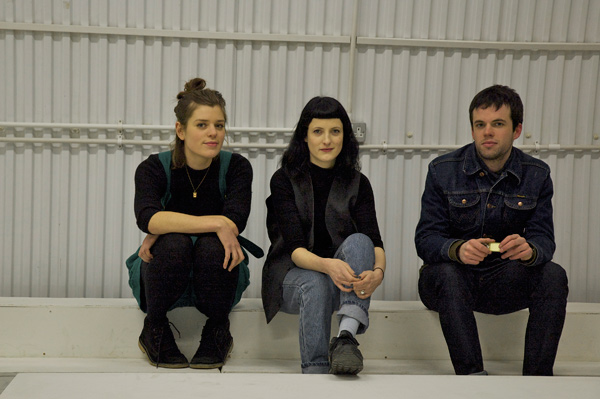William Kherbek talks to gallerists and publishers, Rozsa Farkas and Tom Clark of Arcadia Missa Gallery as part of our weekend long focus on South London’s Visual Arts scene
William: Could you tell us a bit about the beginnings of Arcadia Missa?
Rozsa: We were at uni together and we had a studio practice as part of our course, and it seemed very insular. We wanted more of a social and critical aspect, so we formed a group, with some other people, that would invite people to come and speak. We were trying to find a cultural grouping or a political or ideological position within the institution.
William Kherbek: In your latest publication, How to Sleep Faster, you write “The image garners weight the more it is re-represented and reassimilated, allowing it to extend into a narrative through its reblogs and multicontext existence”. Can you explain?

Rozsa Farkas: That statement was deliberately abstract, short, and pertaining to the photos in the book — which are about the idea of resilience couture. It was basically a statement about the flattening of images, and a way to reproduce their velocity. If, for example, you see a lot of the images on Tumblr, they are very “flat” symbols, the simpler they are, and the more codified they are, the easier they can exist in different contexts, and they becomes symbols without symbolising anything. And, if a symbol doesn’t symbolize anything then it can exist in so many different contexts and, therefore, it is important for it (the image) to acquire “recognisability”.
Tom Clark: And transferability, because of its ambiguity of meaning, it can move to different sites and become meaningful in those contexts.
William: A number of the recent shows at Arcadia Missa have considered the way the body is presented, represented and understood, could you discuss the way the body is represented in a digital and “Web 2.0” context — where people present themselves for, essentially, universal aesthetic evaluation? How you have engaged these ideas curatorially?
Rosza: Our focus on how we are constructing our identity is something that we’ve been looking at for quite a long time. It doesn’t just boil down to the body, we’re interested in how your construction of your identity can form a “language”, and how that language might either be a subject or a tool to talk about or be within the structure of society. This idea is part of why we’re a physical space. We’re not just looking at the internet as a thing, or as something that is outside of society.[/one_third] If anything, it mimics or reinforces gender roles, or individualism, or consumerism. Even if it is a more so-called “democratic” or open-source platform. It also is something whereby you construct your identity by “having” even if having is that having is liking or tweeting: it is still an idea of imagery or brand or a statement that is appropriated somewhere else.
William: What new projects and ideas do you want to explore through the gallery in the near future?
Rozsa: I think the exhibition programme will be slowed down and we’ll incorporate residencies more, because the best part of what we’ve done comes from working closely with artists.




